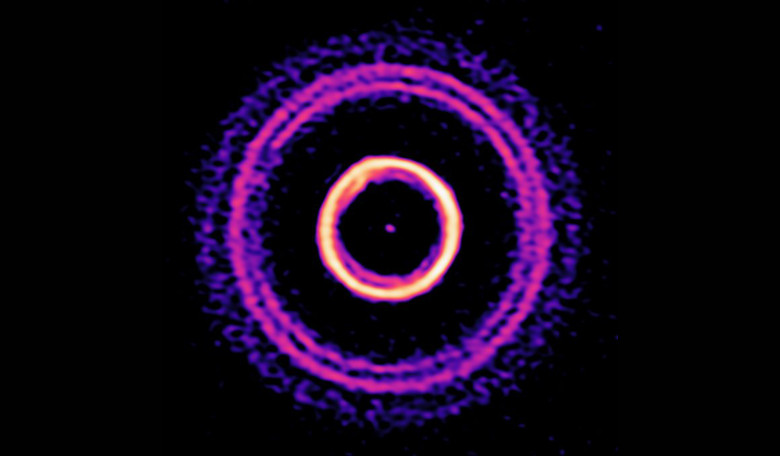With twice as much mass as all the other planets combined, many scientists believe that our resident behemoth gas giant Jupiter did not form where it currently orbits today. Instead it rampaged through the Solar System eating up leftover gas and dust before eventually settling 5.2 astronomical units (AU) away from the Sun.
With a growing collection of ‘hot-Jupiter’ planets being found so close to their host stars in recent years, it did indeed look like our Jupiter was out of place in terms of its position relative to the Sun. But new research by a team of scientists working on the Gemini Planet Imager, or GPI, a sensitive infrared detector mounted on the 8-meter Gemini South telescope in Chile, suggest that Jupiter’s orbit is not unusual after all but is a favoured location for many other Jupiter-like planets in other systems.
The study in questions is part of the GPI Exoplanet Survey, or GPIES, and it is one of two large projects that search for exoplanets by blocking a stars' light and photographing the planets directly. Following an analysis of the first 300 of more than 500 stars surveyed by GPIES, the study helped scientists uncover a ‘sweet spot’ – a swath of space between 3 and 10 times the distance Earth sits from our sun (3-10 astronomical units, or AU) where large gas giants like to congregate.
"As you go out from the central star, giant planets become more frequent,” said Eugene Chiang, a UC Berkeley professor of astronomy and member of the collaboration's theory group.
Jupiter-size planets in this sweet spot have tended to go unobserved in past searches, such as those conducted by the Kepler Space Telescope transit survey and other past radial velocity observations – which looks for telltale wobbles in a star’s motion to help locate an exoplanet – as they look at planets closer in to their host stars. GPIES has helped broaden that search by counting planets between 10 and 100 AUs away from their central star.
The statistics analysed by the team has led to the suggestion that giant planets are more frequently found at 10 rather than 100 AU. If you combine everything from the other surveys, there is a sweet spot for giant planet occurrence around 3 to 10 AU, said Chiang.
One particular caveat that separates Jupiter from the gas giants found in the GPIES is that none of the planets imaged were around sun-like stars. Instead, giant gas planets were discovered only around more massive stars, at least 50 percent larger than our sun, or 1.5 solar masses. "With future observatories, particularly the Thirty-Meter Telescope and ambitious space-based missions, we will start imaging the planets residing in the sweet spot for sun-like stars," said team member Paul Kalas, a UC Berkeley adjunct professor of astronomy.
However, the fact that giant planets are more common around stars more massive than sun-like stars “is an interesting puzzle," Chiang said.
Perhaps more light will be shed on this conundrum sooner rather than later, as scientists using the Atacama Large Millimeter/submillimeter Array (ALMA) have captured a new high-resolution image of a protoplanetary disk with unusual ring features.
The usual wide and smooth ring that astronomers usually expect to see in these disks has been replaced by an isolated outer region composed of an intricate system of thin rings and gaps.
This perplexing and never seen before structure has been interpreted as the workings of a single, migrating planet ten times the mass of Earth sculpting the dust particles into multiple narrow rings.
Scientists taking images with ALMA are seeing an increasing complex array of structures within protoplanetary disks that are beginning to challenge simple ideas of how they could be constructed. But hopefully, further observations taken as part of GPIES and DSHARP (the Disk Substructures at High Angular Resolution Project) could eventually piece together planet formation from beginning to end.
“The community has made great progress on interpreting these sharp rings seen in young planetary systems. Here, one small planet interacting with tiny dust particles can reproduce these rings in isolation, revealing its properties in an indirect way. This one and other similar experiments open new possibilities of characterisation of super young extra-solar planets,” says Sebastian Pérez, from Universidad de Santiago, and lead author of this research.











